Every pet owner knows that feeling of concern when our furry friends fall ill or sustain an injury. Trusting in the expertise of our veterinarians, we rely on them to recommend the best medications for our pets. One such frequently prescribed antibiotic for our canine companions is Clavamox. But as with any medication, it’s crucial to be informed about what we’re giving our pets: How does it work? What are its side effects? Are there any natural remedies that can complement its benefits? Welcome to our comprehensive guide on Clavamox in dogs, where we delve deep into its uses, dosages, potential side effects, and much more.
With insights from veterinary experts, this blog aims to equip you with all the knowledge you need to ensure your dog’s well-being. Whether you’re a new dog parent or an experienced one looking for some clarity, our guide will shed light on all your Clavamox-related queries. Let’s embark on this informative journey together, ensuring our pets remain happy, healthy, and well-taken-care-of.
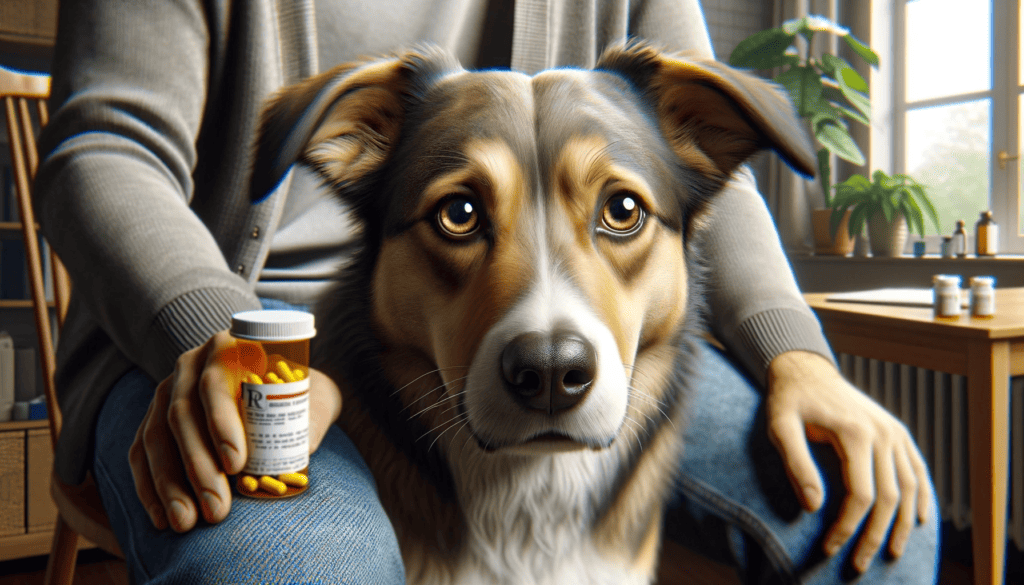
What is Clavamox?
Clavamox is a potent antibiotic commonly prescribed for dogs, as well as cats. A combination of two main ingredients, amoxicillin and clavulanic acid, makes up this medication. Together, these ingredients pack a powerful punch against a broad spectrum of bacteria that might cause various infections in dogs.
1. Amoxicillin: This is a penicillin antibiotic that works against bacteria by preventing them from building their cell walls. This leads to the eventual destruction of the bacteria. On its own, amoxicillin can be effective, but some bacteria produce a substance called beta-lactamase, which can make them resistant to the effects of amoxicillin.
2. Clavulanic Acid: This is where clavulanic acid comes in. Acting as a beta-lactamase inhibitor, it ensures that the bacteria’s resistance mechanisms are curtailed, making them susceptible to the destructive effects of amoxicillin.
The blend of these two ingredients in Clavamox increases the range of bacteria it can act against, making it particularly useful for treating a variety of bacterial infections in dogs, from skin infections to urinary tract infections and even some forms of respiratory infections.
The beauty of Clavamox lies in its combination approach: while amoxicillin targets bacteria, clavulanic acid ensures that these bacteria don’t develop resistance, ensuring a more effective treatment for our pets.
In a nutshell, Clavamox serves as a frontline defense against many common bacterial infections that might afflict our dogs, ensuring that they return to their playful and lively selves in no time.

Brand/Generic Names For Clavamox
When navigating the world of pet medications, it’s essential to recognize the distinction between brand names and generic names. This understanding can make all the difference when purchasing or discussing medications with your veterinarian or pharmacist. Let’s break down the brand and generic nomenclature for Clavamox.
1. Generic Name: The fundamental ingredients that make up Clavamox are amoxicillin and clavulanic acid. This combination is often referred to by these active ingredients. In the realm of human medicine, this combination might be familiar to some as Augmentin, especially when used in human healthcare.
2. Brand Name: Clavamox is the most commonly recognized brand name for this antibiotic combination when prescribed for pets. It’s manufactured by Zoetis, one of the leading companies in animal health. When veterinarians prescribe this antibiotic, they often use the brand name, Clavamox, though the generic version with the same active ingredients may also be available.
Why does this distinction matter?
Understanding the difference between the brand and generic names is crucial for several reasons:
- Cost: Generic versions of medications often cost less than their brand-name counterparts. If you’re looking to save on pet medications, knowing the generic name can be beneficial when shopping around or discussing options with your veterinarian.
- Availability: Sometimes, due to supply chain issues or other market factors, a brand-name drug might be temporarily unavailable. Knowing the generic name allows pet owners to find suitable alternatives without compromising on treatment quality.
- Consistency: While the active ingredients remain the same between brand-name and generic drugs, the fillers or binding agents might differ. In rare cases, pets might have sensitivities to these agents. Thus, if you switch between brand-name and generic, it’s essential to monitor your dog for any adverse reactions.
While Clavamox is the prominent brand name associated with the antibiotic combination of amoxicillin and clavulanic acid for pets, being aware of its generic constituents can provide flexibility, potential cost savings, and a broader understanding when discussing your dog’s health.

Uses For Clavamox in Dogs
As a dog owner, understanding why a veterinarian prescribes a particular medication is crucial. This knowledge ensures peace of mind and allows for proactive care. Clavamox, with its powerful antibiotic combination of amoxicillin and clavulanic acid, has a range of uses in treating various bacterial infections in our canine companions.
1. Skin and Soft Tissue Infections:
- Abscesses: Clavamox can effectively treat abscesses caused by bacteria, helping reduce swelling, pain, and pus formation.
- Wounds: Whether post-surgical or due to an injury, Clavamox can help in preventing or treating bacterial infections in wounds.
- Pyoderma: This refers to any skin disease that leads to pus production. Clavamox is often prescribed to address bacterial causes of pyoderma.
2. Dental Infections:
- Clavamox can effectively combat bacteria responsible for dental abscesses, gum infections, and other oral cavity infections.
3. Urinary Tract Infections (UTIs):
- Bacteria are a common culprit behind UTIs in dogs. Clavamox is regularly prescribed to treat these infections, relieving symptoms like frequent urination, blood in urine, or pain.

4. Respiratory Infections:
- Clavamox can be used to treat certain bacterial infections affecting the respiratory system, such as bronchitis or pneumonia.
5. Bone Infections:
- In some cases, bacteria can infect a dog’s bones, leading to conditions like osteomyelitis. Clavamox can be effective in treating such infections, especially when caught early.
6. Ear Infections:
- While there are multiple causes for ear infections in dogs, bacterial infections are among the common reasons. Clavamox can help address bacterial ear infections, reducing inflammation, pain, and discharge.
Why Clavamox?
The strength of Clavamox lies in its dual-action approach. Amoxicillin targets the bacteria, while clavulanic acid ensures that these bacteria don’t develop resistance. This combination ensures a broad spectrum of action against numerous bacteria types, making it a favored choice among veterinarians.
Clavamox serves as a versatile antibiotic in the arsenal of canine health. From skin to bones, this medication plays a pivotal role in addressing various bacterial infections, ensuring our furry friends remain in their prime health. Always consult with your veterinarian regarding the best treatment options and to understand if Clavamox is the right fit for your dog’s condition.

Clavamox Dosage Chart for Dogs
Clavamox Dosage Chart for Dogs
| Dog’s Weight | Clavamox Tablet Dosage (mg) | Clavamox Liquid Dosage (mL) |
|---|---|---|
| 5 lbs | 31.25 mg | 0.5 mL |
| 10 lbs | 62.5 mg | 1.0 mL |
| 20 lbs | 125 mg | 2.0 mL |
| 30 lbs | 187.5 mg | 3.0 mL |
| 40 lbs | 250 mg | 4.0 mL |
| 50 lbs | 312.5 mg | 5.0 mL |
| 60 lbs | 375 mg | 6.0 mL |
| 70 lbs | 437.5 mg | 7.0 mL |
| 80 lbs | 500 mg | 8.0 mL |
| 90 lbs | 562.5 mg | 9.0 mL |
| 100 lbs | 625 mg | 10.0 mL |
Dosage Frequency: Typically, Clavamox is administered twice daily.
Considerations:
- Type of Infection: The severity and type of infection can alter the required dosage. A vet might prescribe a higher or lower dose based on the dog’s specific condition.
- Formulation: Clavamox comes in different forms, such as chewable tablets and liquid suspension. Ensure you understand the correct measurement based on the prescribed formulation.
- Duration: Typically, the course of Clavamox lasts between 5 to 7 days, but it might be extended based on the dog’s response to treatment.
- Missed Dose: If a dose is missed, give it as soon as you remember. However, if it’s close to the time for the next dose, skip the missed dose and continue with the regular schedule.
IMPORTANT: This chart serves as a general guideline. Individual circumstances, such as the dog’s overall health, age, other medications, and specific condition, can influence the appropriate dosage. Always consult with your veterinarian for personalized advice and never administer Clavamox without a prescription.

Forms of Clavamox
Understanding the various forms in which Clavamox is available helps dog owners administer the medication effectively and ensures that the pet receives the right dosage. Here’s a breakdown of the different forms of Clavamox available for dogs:
1. Chewable Tablets:
- Description: These are flavored tablets designed to make the administration process more manageable, especially for dogs that might resist taking medications.
- Available Dosages: Clavamox chewable tablets are typically available in 62.5 mg, 125 mg, 250 mg, and 375 mg strengths.
- Pros: They are often more palatable for dogs, making the medication process smoother. They also ensure a precise dose.
- Cons: Some dogs might still refuse to take them or could have dietary restrictions that make flavored medications problematic.
2. Liquid Suspension (Drops):
- Description: This is a liquid form of Clavamox that can be measured and administered using a dropper or syringe.
- Preparation: Before the first use, the liquid suspension needs to be reconstituted (mixed) with water. After mixing, it’s stored in the refrigerator.
- Pros: It’s easier to administer to dogs that resist tablets or require a dosage that’s challenging to achieve with tablets. It’s also ideal for puppies or smaller dogs.
- Cons: The liquid form has a shorter shelf life once mixed, typically around 10 days. It also requires refrigeration, and some owners might find it messier or more challenging to ensure their dog swallows the entire dose.
3. Standard Tablets (Non-chewable):
- Description: These are the traditional, non-flavored tablets.
- Available Dosages: Similar to chewable tablets, they come in varying strengths such as 62.5 mg, 125 mg, 250 mg, and 375 mg.
- Pros: These offer precise dosing and have a longer shelf life than the liquid suspension.
- Cons: Some dogs might resist swallowing standard tablets, and they might need to be hidden in food or use a pill dispenser.
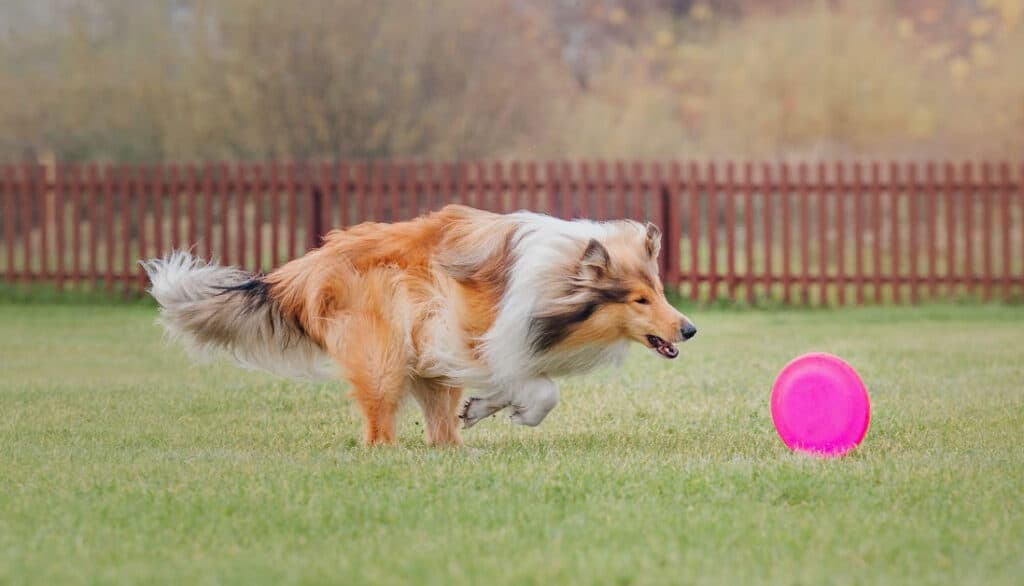
Points to Consider When Choosing a Form:
- Dog’s Preference: Some dogs might prefer chewables over liquid or vice versa. Understanding your pet’s preference can make the medication process smoother.
- Ease of Administration: Consider which form you’re most comfortable administering, especially if you’ll be giving the medication for several days.
- Dosage Accuracy: It’s crucial to ensure the correct dosage, so choose a form that allows you to administer the prescribed amount accurately.
- Storage and Shelf Life: Consider the storage requirements (like refrigeration for the liquid form) and how long you’ll need to administer the medication.
Clavamox offers flexibility in its administration, catering to the varied preferences of dogs and their owners. Whether your dog is a chewer, a licker, or a stubborn medication-taker, there’s likely a form of Clavamox that will suit both your needs.
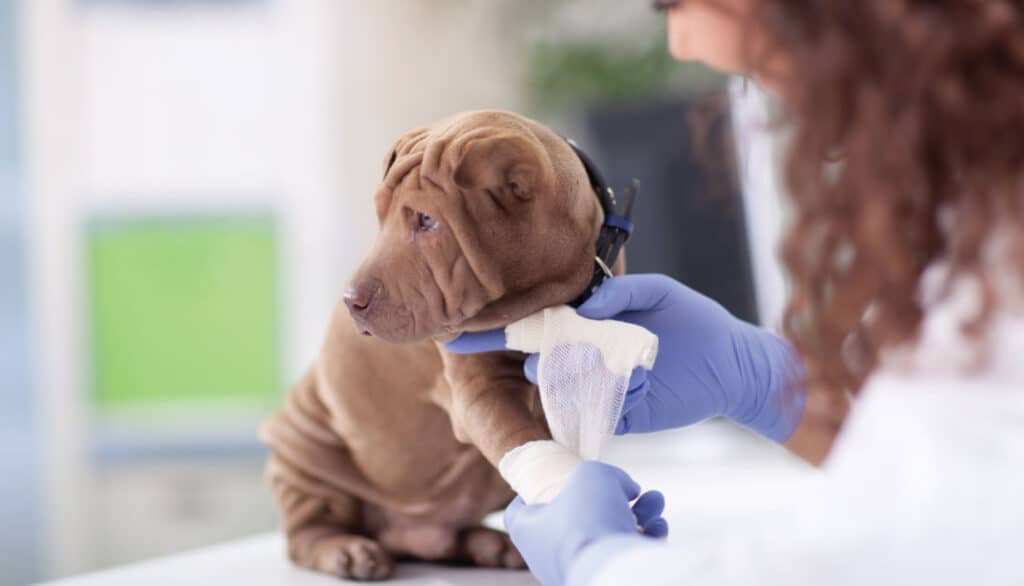
Side Effects of Clavamox In Dogs
While Clavamox is a commonly prescribed and generally safe antibiotic for dogs, like any medication, it can have potential side effects. Being informed about these side effects can help dog owners identify any issues early and seek veterinary advice when needed.
1. Allergic Reactions:
- Symptoms: Swelling of the lips, face, or tongue; hives; difficulty breathing; rapid heartbeat.
- Note: Allergic reactions, while rare, require immediate veterinary attention. If you suspect your dog is having an allergic reaction to Clavamox, discontinue the medication and contact your vet promptly.
2. Gastrointestinal Issues:
- Diarrhea: Some dogs might experience loose or watery stools. If diarrhea is severe, persistent, or bloody, contact your veterinarian.
- Vomiting: It’s not uncommon for some dogs to vomit after taking Clavamox, especially if given on an empty stomach.
- Loss of Appetite: Some dogs might eat less while on Clavamox.
3. Changes in Behavior:
- Lethargy: Some dogs might become less active or seem drowsy.
- Hyperactivity: Conversely, some dogs might become overly active or restless.
4. Yellowing of the Skin or Eyes (Jaundice):
- This could indicate a liver problem and requires immediate veterinary attention.
5. Drooling or Changes in Urination:
- Excessive drooling after administering Clavamox or changes in the frequency or color of urination can be side effects.
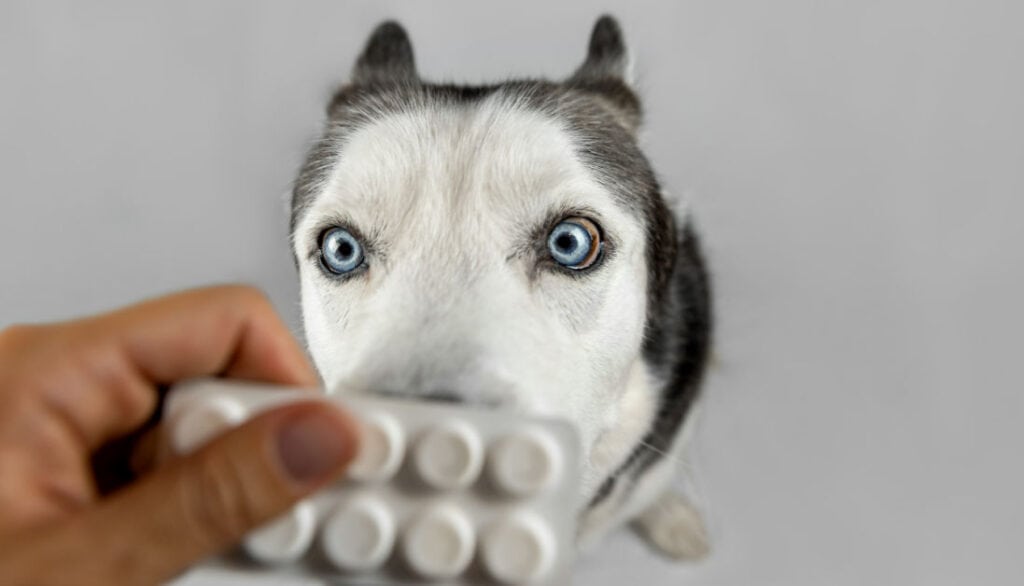
Tips to Mitigate Side Effects:
- With Food: Administering Clavamox with a small amount of food can help reduce the risk of stomach upset.
- Consistent Timing: Give Clavamox at evenly spaced intervals, as directed by your vet, to maintain consistent drug levels in your dog’s system.
- Monitor: Keep a close eye on your dog after administering Clavamox, especially the first few times, to catch any adverse reactions early.
- Consult with Vet: If any side effect concerns you, or if your dog seems particularly uncomfortable, don’t hesitate to contact your veterinarian for advice.
Most dogs tolerate Clavamox well, and the benefits of treating bacterial infections typically outweigh the risks of potential side effects. However, being observant and proactive in recognizing and addressing these side effects ensures that our canine companions remain safe and comfortable during their course of treatment.
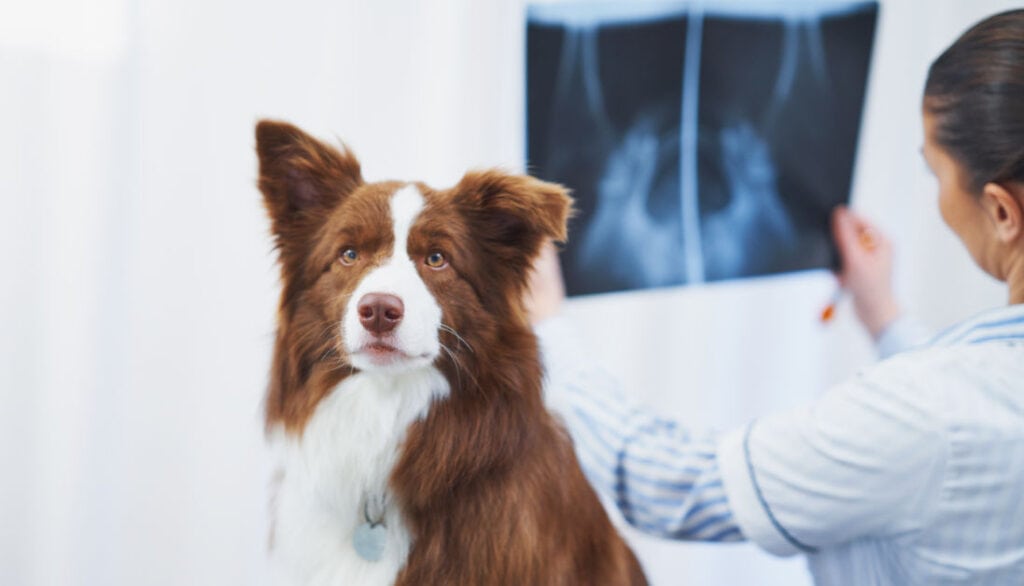
Cautions When Using Clavamox In Dogs
Using Clavamox or any medication necessitates a degree of caution to ensure the safety and wellbeing of your pet. Being informed about potential risks and precautions ensures that you’re well-prepared to provide your dog with the best care while they’re on medication.
1. Pre-existing Health Conditions:
- Liver or Kidney Issues: Dogs with liver or kidney diseases might metabolize and excrete drugs differently. Ensure your vet is aware of any known conditions before starting Clavamox.
- Allergies: If your dog has had allergic reactions to other penicillin-based drugs, they might also be allergic to Clavamox.
2. Pregnancy and Lactation:
- While Clavamox is generally considered safe for pregnant or lactating dogs, it’s essential to discuss any potential risks with your veterinarian.
3. Drug Interactions:
- Other Antibiotics: Clavamox can interact with other antibiotics, especially those of the tetracycline or chloramphenicol classes.
- Antacids: Medications that reduce stomach acidity might interfere with the absorption of Clavamox.
- Probenecid: This drug can increase the amount of amoxicillin in the dog’s bloodstream, potentially leading to side effects.
4. Overdose Risks:
- Accidental overdoses can occur. Signs might include muscle spasms, seizures, or severe vomiting. If you suspect an overdose, seek veterinary attention immediately.
5. Duration of Treatment:
- It’s essential to complete the entire course of Clavamox, even if your dog seems better. Stopping the medication early can lead to antibiotic resistance or a recurrence of the infection.
6. Missed Doses:
- If you forget a dose, give it as soon as you remember. If it’s close to the next dose’s time, wait and continue with the regular schedule. Never give two doses at once.
Being cautious ensures that your dog benefits from the therapeutic effects of Clavamox without unnecessary risks. Regularly communicate with your veterinarian, report any unusual behaviors or side effects, and always follow the prescribed dosage and duration to ensure your dog’s health and safety.

Drug Interactions
When your dog is on medication, it’s crucial to be aware of potential drug interactions, as certain combinations can either diminish the effect of the drugs or amplify potential side effects. Clavamox, being an amalgamation of amoxicillin and clavulanate, has some potential interactions with other drugs. Here’s what you should know:
1. Other Antibiotics:
- Tetracyclines and Macrolides: These classes of antibiotics may diminish the bactericidal effects of Clavamox. Using them concurrently can decrease the efficacy of Clavamox in treating infections.
- Chloramphenicol: This antibiotic can also interfere with the bactericidal effects of Clavamox.
2. Antacids, Laxatives, and Food:
- Medications or substances that modify the stomach’s pH level can affect the absorption rate of Clavamox. If your dog is on antacids or certain types of laxatives, it may influence the efficacy of Clavamox.
Important Considerations:
- Always Inform Your Vet: When discussing any medication for your dog, always inform your veterinarian of any other drugs, supplements, or over-the-counter treatments your dog is currently taking or has recently taken.
- Avoid Human Medications: Never give your dog human medications without explicit instruction from a veterinarian. Many human drugs can be harmful or fatal to pets.
- Observe for Adverse Effects: If your dog is on multiple medications, be vigilant in monitoring them for any unusual behaviors, reactions, or symptoms that might indicate an interaction.
- Stick to the Prescription: Always give the prescribed dose at the recommended times. If you suspect an interaction or if your dog seems to be experiencing side effects, contact your vet immediately.
Drug interactions can be complex, and while Clavamox is a widely used and generally safe antibiotic for dogs, it’s essential to approach its administration with an understanding of potential interactions. Ensuring that you’re fully informed and in regular communication with your veterinarian is the best way to ensure your dog’s safety and health while on medication.
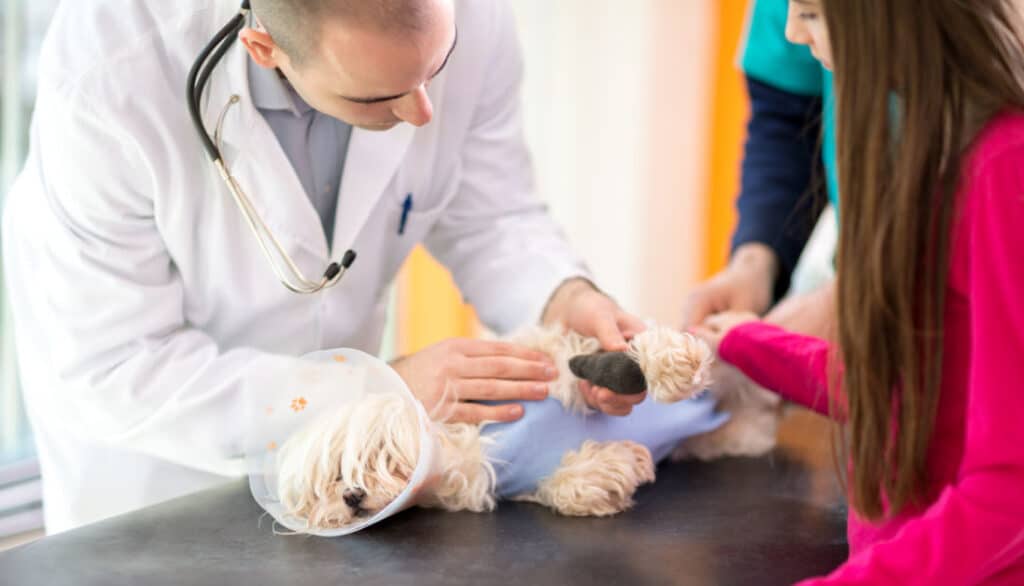
How Long Does It Last?
When prescribing Clavamox for dogs, pet owners often wonder about the medication’s duration in the system, its shelf life, and how long treatment might last. Here’s a detailed breakdown:
1. Duration in the Dog’s System:
- Half-Life: The half-life of a drug is the time it takes for half of it to be eliminated from the system. Clavamox’s active ingredients, amoxicillin and clavulanate, have a half-life ranging from 1 to 1.5 hours in dogs. This means that most of the drug is out of a dog’s system within 6 to 9 hours, which is why Clavamox is often prescribed to be given twice daily.
2. Treatment Duration:
- Standard Duration: The length of time a dog needs to be on Clavamox can vary based on the type and severity of the infection. Generally, treatment durations range from 5 to 14 days.
- Follow the Vet’s Prescription: It’s imperative to complete the full course of antibiotics, even if your dog seems to have recovered. Stopping early can lead to antibiotic-resistant bacteria or an infection resurgence.
- Re-Evaluation: If there’s no improvement in your dog’s condition after a few days of starting Clavamox, it’s essential to consult your veterinarian. They might need to adjust the treatment or consider alternative medications.
3. Shelf Life and Storage:
- Tablets: Clavamox tablets typically have a shelf life of several years if stored in a cool, dry place away from direct sunlight. Always check the expiration date before administering.
- Liquid Suspension: Once mixed with water, Clavamox liquid suspensions should be refrigerated and used within 10 days. Unused portions after this period should be discarded.
4. Signs of Drug Degradation:
- Color or Consistency Changes: If the Clavamox suspension changes color, becomes cloudier than usual, or has an off odor, it might be a sign of degradation and shouldn’t be used.
- Tablet Discoloration: Tablets that appear discolored or crumbly may have degraded and might not be effective.
Understanding how long Clavamox lasts, both in the dog’s system and on your shelf, is crucial for ensuring effective treatment. Always adhere to your vet’s recommended treatment duration, store the medication appropriately, and remain vigilant to signs that the drug might have degraded or expired.

How To Give Clavamox To Your Dog
Administering medication to your dog can sometimes be a challenge, especially if they’re wary of unfamiliar items or tastes. Here are step-by-step instructions and tips on how to give Clavamox, be it in tablet or liquid form, to your dog.
1. Clavamox Tablets:
- Step 1: Read the prescription label carefully for the correct dosage.
- Step 2: Ensure your hands are clean.
- Step 3: Hold the tablet between your thumb and forefinger.
- Step 4: Using your other hand, gently open your dog’s mouth by holding onto the upper jaw.
- Step 5: Tilt the head back slightly and place the tablet as far back on the tongue as possible.
- Step 6: Close the dog’s mouth and hold it shut while gently rubbing or tapping the throat to encourage swallowing.
Tips for Tablets:
- Pill Dispensers: These are specially designed tools that can help make the process of giving tablets easier and safer.
- Hide in Food: For dogs reluctant to take a tablet, consider hiding it in a small amount of their favorite treat or a special pill pocket treat.
2. Clavamox Liquid Suspension:
- Step 1: Ensure the suspension is well shaken so the medication is evenly distributed.
- Step 2: Use the provided syringe or dropper to draw up the prescribed dose.
- Step 3: Approach your dog calmly and gently open its mouth.
- Step 4: Insert the tip of the syringe or dropper into the side of the mouth, between the cheek and back teeth.
- Step 5: Slowly dispense the liquid. Allow your dog to swallow before dispensing more.
Tips for Liquid Suspension:
- Mix with Food: If your dog is reluctant, you can mix the liquid suspension with a small amount of wet food. Ensure they consume the entire portion to get the full dose.
- Tasty Treat After: Offer a treat after administering the medication as a reward and to mask any aftertaste.
General Tips:
- Stay Calm: Your demeanor can influence your dog’s behavior. Approach the process calmly and confidently.
- Consistent Timing: Give Clavamox at evenly spaced intervals to maintain consistent drug levels in your dog’s system.
- Monitor for Reactions: After administering, keep an eye on your dog for any immediate allergic reactions or side effects.
- Praise and Positive Reinforcement: Always reward your dog after giving medication. This can make future administrations smoother.
Giving Clavamox to your dog might require some patience and technique, especially the first few times. With consistent positive reinforcement and a calm approach, it will become a more straightforward task over time, ensuring your pet gets the treatment they need.
Complementary Natural Products That You Can Add To Your Treatment Plan
In conjunction with conventional treatments like Clavamox, many pet owners seek natural remedies to boost overall health and potentially alleviate side effects. Here’s a guide to some complementary products you might consider. Always consult your vet before introducing any new product to ensure it’s safe and appropriate for your dog’s specific situation.
1. Standard Process Canine Immune Support:
- What It Is: A supplement made from a blend of whole food ingredients, targeted at boosting the immune system of dogs.
- Benefits: Can help support a dog’s immune system, particularly when combating bacterial infections.
2. Calcium Lactate:
- What It Is: A calcium supplement derived from lactic acid.
- Benefits: Can support cell functions and maintain proper calcium levels, especially if the dog’s diet is lacking or if there’s a need for additional calcium during recovery.
3. Glacier Peak Immune Boost Product:
- What It Is: A blend of natural herbs designed to support a dog’s immune system.
- Benefits: Helps detoxify the body and enhance the immune response, which can be beneficial when the dog is on antibiotics or recovering from an illness.
4. HomeoPet Immune:
- What It Is: A homeopathic remedy formulated to boost a dog’s natural defense mechanisms.
- Benefits: Can aid in speeding up recovery, reducing fatigue, and fortifying the body against recurrent infections.

5. Probiotics:
- What They Are: Beneficial bacteria that promote a healthy gut environment.
- Benefits: Antibiotics like Clavamox can sometimes disrupt the natural balance of the gut flora. Probiotics can help restore this balance, prevent diarrhea, and boost overall digestive health.
6. Omega-3 Fatty Acids:
- What They Are: Essential fatty acids found in fish oils or flaxseed oil.
- Benefits: Omega-3s have anti-inflammatory properties and can support skin, coat, and joint health. They can also boost immunity and promote overall well-being.
7. Echinacea:
- What It Is: A herb known for its immune-boosting properties.
- Benefits: Can support immune function, helping dogs to better fend off infections.
Points to Remember:
- Always Consult Your Vet: While these natural products can be beneficial, they might not be suitable for all dogs or might interact with other medications. Always discuss with your veterinarian before adding any new supplement or remedy.
- Monitor Your Dog: After introducing a new product, observe your dog for any changes or reactions to ensure they’re tolerating it well.
- Quality Matters: Always opt for high-quality, reputable brands when purchasing natural products to ensure they’re safe and effective.
Natural products can be a valuable adjunct to conventional treatments, potentially boosting a dog’s overall health and speeding recovery. By being informed and working closely with your vet, you can craft a comprehensive treatment plan that benefits your furry friend.
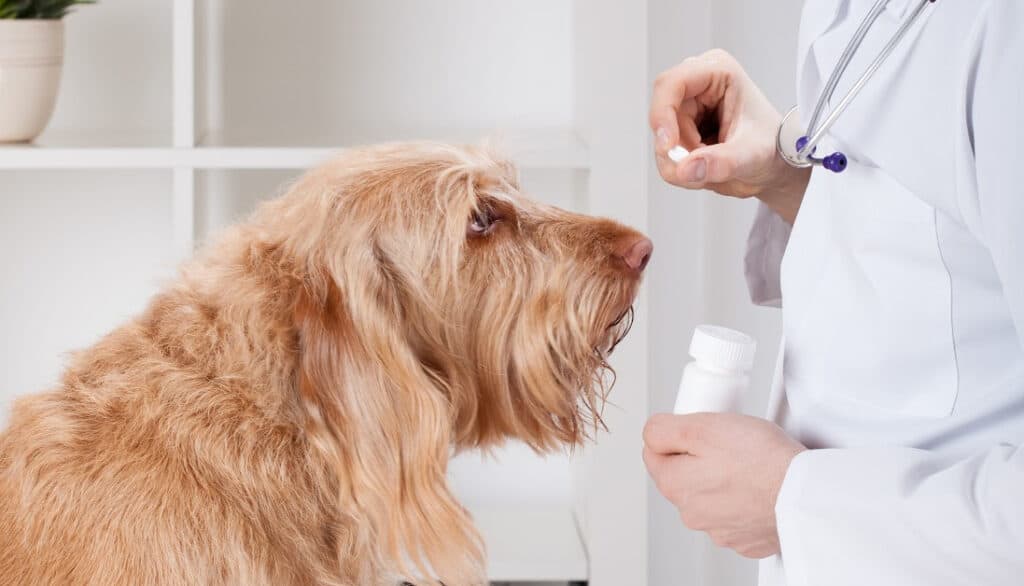
Conclusion
The health and well-being of our four-legged companions is always a priority for pet owners. When your vet prescribes Clavamox for your dog, it comes with a responsibility to understand the medication fully—from its uses and side effects to the potential natural products that can complement the treatment.
Clavamox is a trusted antibiotic in the veterinary world, effective in treating a variety of infections. While its benefits are significant, being aware of the potential side effects and interactions is crucial. By taking a proactive approach, understanding dosages, and monitoring your dog’s reactions, you can ensure that the treatment is both effective and safe.
Moreover, the world of natural supplements offers promising avenues for enhancing your dog’s overall health and bolstering their immune system. But remember, the key is always collaboration with your veterinarian. They offer a wealth of knowledge and expertise that ensures your dog gets the best care possible.
In the journey of pet ownership, there will inevitably be bumps along the road. But with knowledge, vigilance, and the right resources, you can navigate these challenges confidently, ensuring many happy, healthy years ahead for your beloved pet.
Frequently Asked Questions
The generic version of Clavamox is a combination of amoxicillin and clavulanate potassium.
Clavamox is an antibiotic that is commonly prescribed for dogs to treat a variety of bacterial infections, including those affecting the skin, urinary tract, respiratory system, and wounds.
The dosage of Clavamox depends on the weight of the dog and the type and severity of the infection being treated. It’s essential to follow your veterinarian’s recommended dosage. Never administer any medication without consulting a veterinarian first.
Typically, Clavamox is given to dogs twice a day. However, the exact frequency may vary based on the veterinarian’s instructions.
If you have Clavamox in liquid form (oral suspension), then yes, it should be refrigerated. However, Clavamox tablets do not require refrigeration.
It’s generally recommended to give Clavamox to dogs with food to reduce the potential for gastrointestinal upset.
If you suspect you’ve given your dog an overdose of Clavamox, contact your veterinarian or an emergency animal clinic immediately. Overdose symptoms may include vomiting, diarrhea, or changes in behavior.
If you miss a dose, give it as soon as you remember. If it’s close to the time for the next dose, skip the missed dose and go back to the regular dosing schedule. Do not give two doses at once. Always consult with your veterinarian if you have concerns about dosing.
